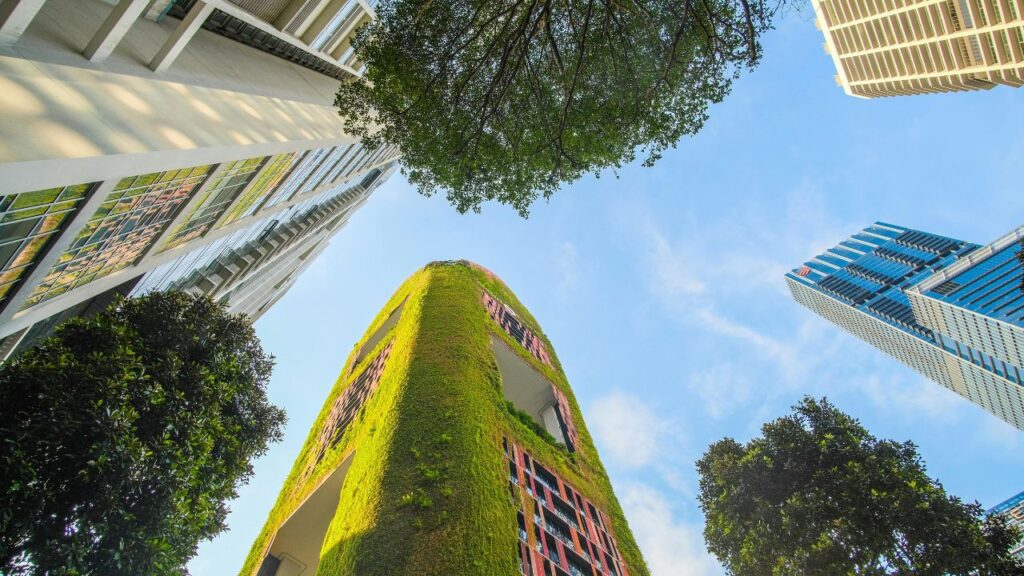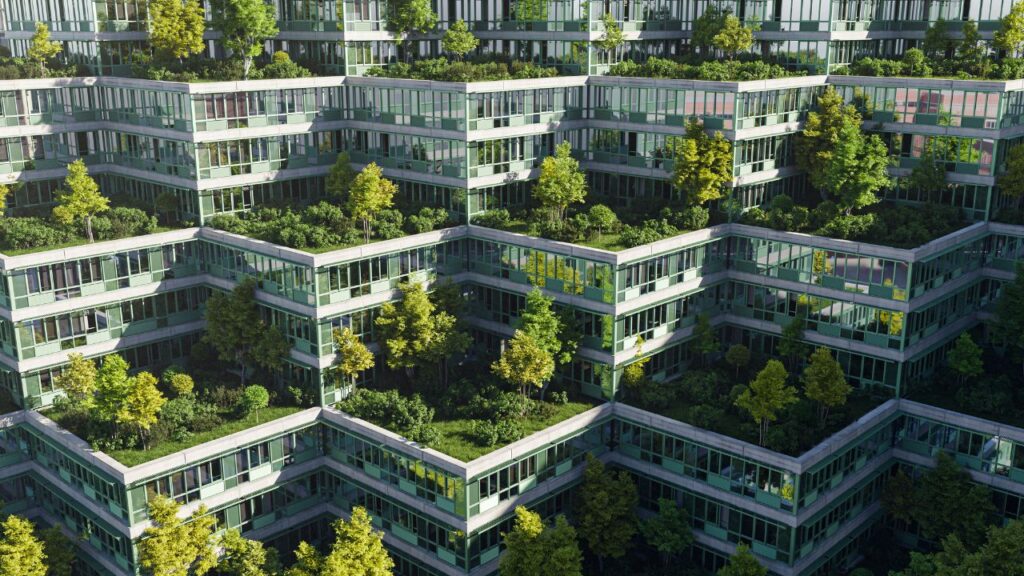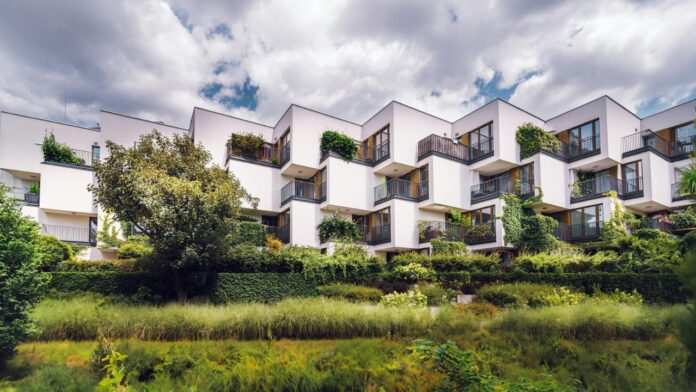In 2025, more homeowners than ever are turning to sustainable design ideas for their homes. With climate change concerns growing and eco-conscious living becoming mainstream, sustainable home design isn’t just a trend—it’s a lifestyle.
From reducing your carbon footprint to lowering utility bills and creating healthier indoor spaces, sustainable design has numerous benefits. In this article, we’ll explore 10 must-try sustainable design ideas for your home in 2025. Whether you’re renovating or building from scratch, these ideas are practical, stylish, and environmentally friendly.
Why Sustainable Design Matters in 2025
Sustainable design goes beyond aesthetics. It’s about making choices that are good for you and the planet. In 2025, with the rise in extreme weather events and rising energy costs, adopting eco-friendly living practices is more crucial than ever. Sustainable homes are energy-efficient, reduce waste, and promote healthier living.
Key Benefits of Sustainable Home Design in 2025:
|
Benefit |
Description |
|
Energy Efficiency |
Lower electricity and heating bills with smart energy use |
|
Healthier Indoor Air |
Use of non-toxic materials and natural ventilation |
|
Increased Home Value |
Green-certified homes are in high demand |
|
Reduced Carbon Footprint |
Environmentally responsible building materials and systems |
|
Government Incentives |
Tax credits and rebates for eco-friendly upgrades |
10 Must-Try Sustainable Design Ideas

1. Solar-Powered Energy Systems
Solar panels have become more affordable and efficient in 2025. They’re one of the best ways to reduce reliance on fossil fuels and lower your energy bills.
Why It Matters:
- Clean, renewable energy source
- Long-term cost savings
- Increases home resale value
Quick Facts:
|
Feature |
Details |
|
Avg. Cost |
$12,000 to $20,000 (with tax incentives) |
|
Lifespan |
25-30 years |
|
ROI Timeline |
6-10 years |
2. Natural Insulation Materials

Traditional insulation materials like fiberglass can release harmful chemicals. In contrast, natural options such as sheep wool, cork, and hempcrete are non-toxic, biodegradable, and just as effective.
Benefits:
- Improved indoor air quality
- Better temperature regulation
- Sustainable and safe for your family
|
Material |
Thermal Performance |
Eco Benefits |
|
Hempcrete |
High |
Carbon-negative and durable |
|
Cork |
Moderate |
Renewable and antimicrobial |
|
Sheep Wool |
Excellent |
Biodegradable and moisture-regulating |
3. Water-Saving Fixtures and Greywater Systems
Water conservation is essential in sustainable living. In 2025, smart faucets, low-flow showerheads, and dual-flush toilets are common. Greywater systems reuse sink and laundry water for gardening.
Key Upgrades:
- Low-flow fixtures (reduce water use by up to 60%)
- Rainwater harvesting systems
- Smart irrigation for outdoor spaces
|
Upgrade |
Water Saved Per Year |
Added Benefit |
|
Low-Flow Showerhead |
2,700 gallons |
Lower water heating costs |
|
Dual-Flush Toilet |
4,000 gallons |
Reduces wastewater |
|
Greywater Recycling |
Varies by system |
Ideal for landscaping and plant care |
4. Upcycled and Reclaimed Furniture
Instead of buying new furniture, consider upcycled or reclaimed pieces. Not only do they add character, but they also prevent waste and reduce demand for raw materials.
Ideas for Upcycling:
- Turn old doors into dining tables
- Repurpose pallets into bookshelves
- Use vintage cabinets as vanities
Eco Impact:
- Diverts waste from landfills
- Saves trees and reduces carbon footprint
5. Low-VOC and Non-Toxic Paints
Paints and finishes often release volatile organic compounds (VOCs), which can harm indoor air quality. Choose low-VOC or VOC-free paints for a healthier environment.
Benefits:
- Reduces respiratory issues
- Safer for kids and pets
- Widely available in 2025 in all shades and finishes
|
Paint Type |
VOC Level |
Best Use Areas |
|
Zero-VOC |
<5 g/L |
Bedrooms, nurseries |
|
Low-VOC |
<50 g/L |
Living rooms, kitchens |
|
Natural Paints |
Plant-based |
Whole-house coverage |
6. Green Roofs and Vertical Gardens

Urban homeowners are turning to green roofs and vertical gardens to make the most of limited space. These not only look great but also provide insulation and clean the air.
Advantages:
- Reduces urban heat
- Improves air quality
- Supports pollinators like bees and butterflies
|
Feature |
Benefit |
|
Green Roof |
Reduces indoor temperature by 6°F |
|
Vertical Garden |
Filters indoor air pollutants |
|
Modular Garden Kits |
Easy DIY for small spaces |
7. Smart Home Automation for Energy Efficiency
Smart thermostats, lighting, and appliances help reduce energy waste. In 2025, integration with solar and battery storage systems is seamless.
Smart Upgrades:
- Programmable thermostats
- Smart plugs and energy monitors
- Motion-sensor LED lighting
Quick Stat: Homes with smart systems save up to 20% on annual energy costs.
8. Sustainable Flooring Options
Flooring materials like bamboo, cork, and recycled hardwood offer beauty and sustainability. They’re durable and come in various styles.
|
Material |
Sustainability |
Durability |
Best Room Use |
|
Bamboo |
Renewable |
High |
Living rooms, bedrooms |
|
Cork |
Recyclable |
Moderate |
Offices, kitchens |
|
Recycled Wood |
Eco-friendly |
Very High |
All areas |
9. Passive Solar Design and Natural Ventilation
Architectural choices like home orientation, window placement, and shading can drastically reduce energy use.
Tips for Passive Design:
- South-facing windows for winter heat gain
- Roof overhangs for summer shading
- Open floor plans for airflow
Impact: Reduces need for mechanical heating and cooling by 30%-50%.
10. Locally Sourced and Ethical Building Materials
Choosing materials from local suppliers cuts down transportation emissions. Ethical sourcing ensures fair labor and environmentally sound production.
Examples:
- Locally quarried stone
- FSC-certified wood
- Recycled metal and glass
|
Material Type |
Local Benefit |
Ethical Source Examples |
|
FSC Wood |
Supports local forests |
Forest Stewardship Council (FSC) |
|
Recycled Brick |
Diverts waste |
Reclaimed from demolitions |
|
Natural Stone |
Lower shipping emissions |
Local quarries |
Cost vs Benefit: Is Sustainable Design Worth It in 2025?
While some sustainable upgrades have higher upfront costs, the long-term benefits often outweigh them. Homes designed with sustainability in mind tend to have lower maintenance costs and higher resale value.
|
Feature |
Initial Cost |
Long-Term Savings |
ROI Timeline |
|
Solar Energy |
High |
$1,000+/year |
6-10 years |
|
Smart Home System |
Medium |
$300-$500/year |
2-3 years |
|
Water-Saving Fixtures |
Low |
$100-$400/year |
1-2 years |
Bottom Line: Sustainable design is a smart investment that pays off economically and environmentally.
Bonus Tips to Make Your Home More Eco-Friendly
- Composting: Reduce food waste and enrich garden soil
- LED Lighting: Uses 90% less energy than incandescent bulbs
- Energy Audit: Helps you understand where to make improvements
- Eco-Certifications: Look for LEED, WELL, or ENERGY STAR when purchasing appliances or planning renovations
Final Thoughts
Incorporating sustainable design ideas into your home in 2025 is not only smart but essential. Whether you’re switching to solar, installing a green roof, or simply using low-VOC paint, each step contributes to a healthier home and planet. Start small if you need to, but start now. Sustainable design is the future—and it begins in your home.
Frequently Asked Questions (FAQ)
Q: What is the most affordable sustainable home design idea?
A: Water-saving fixtures like low-flow showerheads and dual-flush toilets are budget-friendly and offer quick returns.
Q: Can I make my home eco-friendly without renovating everything?
A: Yes! Start with small changes like using non-toxic paint, composting, and upgrading lighting.
Q: Are smart devices really energy-saving?
A: Yes, smart thermostats and appliances help optimize energy use and reduce waste.


















![10 Countries With the Best Healthcare in the World [Statistical Analysis] Countries With the Best Healthcare in the World](https://articleify.com/wp-content/uploads/2025/07/Countries-With-the-Best-Healthcare-in-the-World-1-150x150.jpg)










